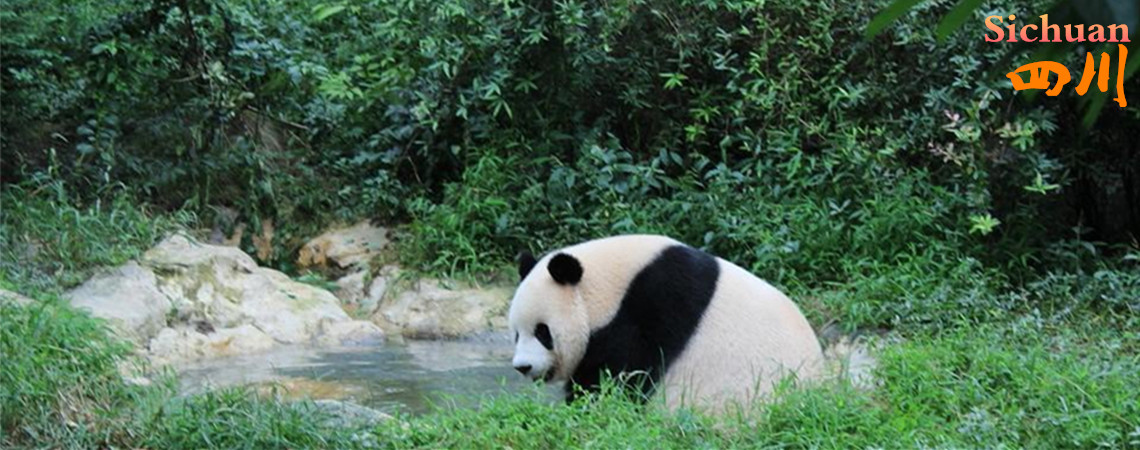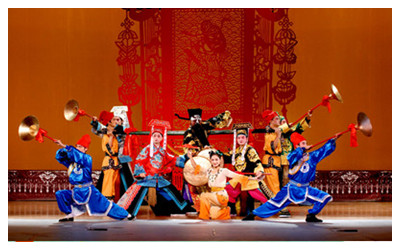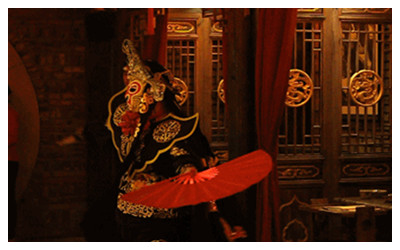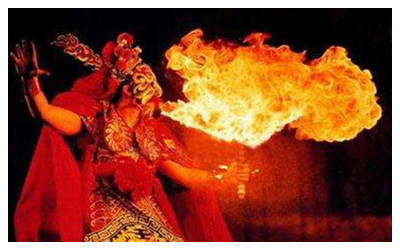Skype: neodalle-travel
Tel: +86 135 7447 2266
E-mail: sales@visitaroundchina.com

History of Sichuan Opera
 In the tune development, Sichuan Opera is formed by high tune, Kun tune, Huqin tune, Tanxi and Xideng. Except Xideng, the other four tunes were spread from other places into Sichuan Province between late Ming Dynasty and middle Qing Dynasty. Chuan Opera is the feature of Sichuan culture. And Chengdu, the capital of Sichuan, is the hometown of Sichuan Opera.
In the tune development, Sichuan Opera is formed by high tune, Kun tune, Huqin tune, Tanxi and Xideng. Except Xideng, the other four tunes were spread from other places into Sichuan Province between late Ming Dynasty and middle Qing Dynasty. Chuan Opera is the feature of Sichuan culture. And Chengdu, the capital of Sichuan, is the hometown of Sichuan Opera.
In Tang Dynasty, it was a sentence said that “Shu (the old name of Sichuan province) Opera ranks top in the world ”. And in Qianlong Emperor period Qing Dynasty, based on the local Chedeng Opera, mixed with tunes of operas in Jiangsu, Jiangxi, Anhui, Hubei, Shaanxi, and Gansu provinces, Sichuan Opera was formed into being. The high tune of Sichuan Opera is the typical feature, the rich melodies and beautiful tunes of high tune is the mainly singing style. The lyrics of Chuan Opera is in humorous style, full of Sichuan dialect tone. The lyrics are mostly the stories of folk life. Thus it is a performance popular with locals very much.
Sichuan opera is an iconic Sichuan cultural element, and Chengdu is the home of Sichuan opera. As early as Tang dynasty there was a saying "Shu plays are best in the world". Upon the basis of local Chedeng format of opera, different melodic styles from places like Jiangsu, Jiangxi, Anhui, Hubei, Shaanxi and Gansu were incorporated, subsequently forming "Sichuan opera" that is performed using Sichuan dialect and comprised of the five styles of gaoqiang, huqin voice, kunqiang, dengxi "lantern theatre" and tanxi.
Sichuan opera's gaoqiang features a wide array of tunes that are touching, beautiful and full of local characteristics, renowned as the primary style of Sichuan opera. Vocal accompaniments come in many forms, such as lingqiang, heqiang, hechang, banchang and chongchang that are various types of compositions for different ensembles, thus the structure is very sophisticated and captivating. Sichuan opera uses vivid, lively, humorous and interesting language full of local colors, vibrant daily life ambiance and huge popularity among the common folks. Legend of the White Snake - Jinshan Templeis a Sichuan opera play famed around the world.
"Bian Lian" or Faces-Changing is one of the performances unique to Sichuan opera, and is one of those dramatic arts that always electrify and amaze the audience. Face-changing was invented as a romantic method for the performer to express the inner feelings of the character, transforming something as intangible, unperceivable and abstract as emotion into a visible, noticeable and substantive format. Liu Chengji once said: "The techniques in face-changing mostly fall into three categories, namely 'face-dragging,' 'blowing-dust' and 'pulling-down,' but there is also an additional type called 'lucky face-change'".
Unique Skill of Sichuan Opera
 Change Faces is the unique skill of Sichuan Opera. It is a performance to express the emotional changes of the role, aiming to let the audiences to see the emotional changes from the changing faces rather than feel about it.
Change Faces is the unique skill of Sichuan Opera. It is a performance to express the emotional changes of the role, aiming to let the audiences to see the emotional changes from the changing faces rather than feel about it.
Material used in Chuan Opera facial masks was paper originally. With improvement, rough straw paper was instead of paper as the materials, screening it by smog or fan in performance process, performers tear down the masks layer by layer. After the establishment of PRC, the change face skill developed rapidly. And the material used on the masks now is silk which offers a great convenience to Chuan Opera performers.
Roles in Change Faces performance are unknown roles including chivalry, ghost, etc. Those famous figures such as Guan Yu, Cao Cao don’t appear in Change Faces performance generally The colors used in masks should be bright-colored.
Where to see Sichuan Opera?
 Shunxing Tea House
Shunxing Tea House
Shunxing Tea House in Chengdu was once titled as “one of the top 100 tea houses in China”. The structures, dining, tea culture, and performance are all in a typical Sichuan folk style.
Add: 3th Floor, International Exhibition Center, No. 258, Shawan Road, Jinniu District 金牛区 沙湾路258号国际会展中心3楼(沙湾国际会展中心南侧)
 Ask Questions ?
Ask Questions ?